ORIF - Compression plate
1. Introduction
Goal of treatment
The goal of treatment for a simple two-part fracture of the shaft of the clavicle requires anatomical restoration of length, alignment and rotation.
In transverse and short oblique fractures of the diaphysis, placement of a lag screw is not always possible. However, axial compression can be achieved using a compression plate.
Note: This is the most common pattern. The deforming force on the medial end is the pull of the muscles and the deforming force on the lateral side is the weight of the upper extremity.
Beware of the major neurovascular bundle (subclavian artery, vein, and brachial plexus) running directly beneath the midshaft of the clavicle.
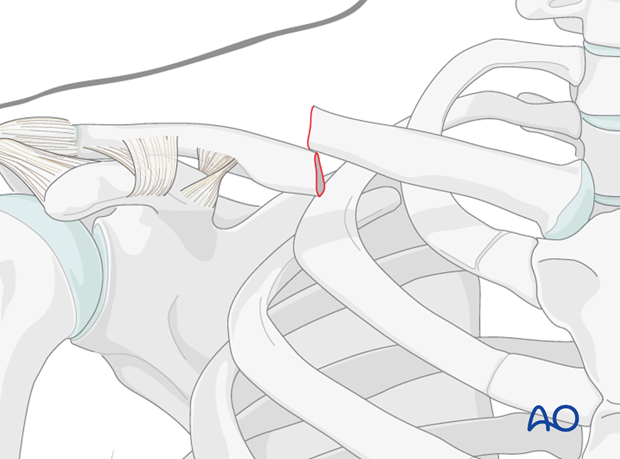
Other types of deformities may occur if the coracoclavicular ligaments are disrupted (eg, superior displacement of the lateral fragment).
Plate alternatives
We will here show the procedure with a precontoured clavicular plate which has both a bend and a twist built into it.
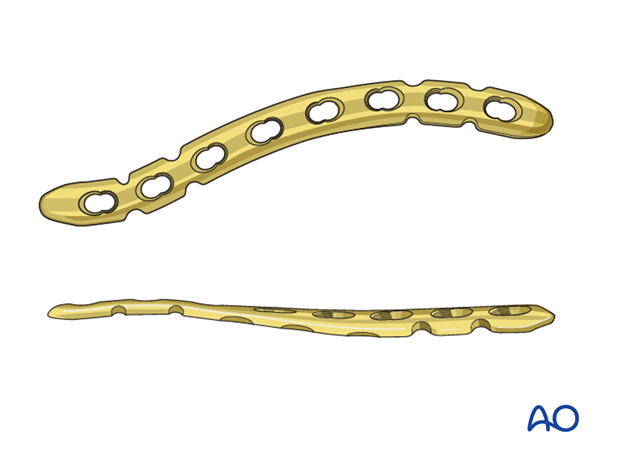
However, if a precontoured clavicular plate is not available, there are other options.
A straight plate may be used if it fits the clavicle (conventional or angle stable). If it does not, then it needs to be contoured.
This is best achieved with a slight twist at the midportion of the plate. This results in the lateral plate being applied superiorly and the medial portion anteriosuperiorly. A reconstruction plate which is easier contour may be used in smaller patients where the forces working on the plate are not as great.
Biomechanically, anterosuperior or anterior plates result in mechanically stronger fixation. The exact placement of the plate will depend on the fracture pattern and the position of the fracture.
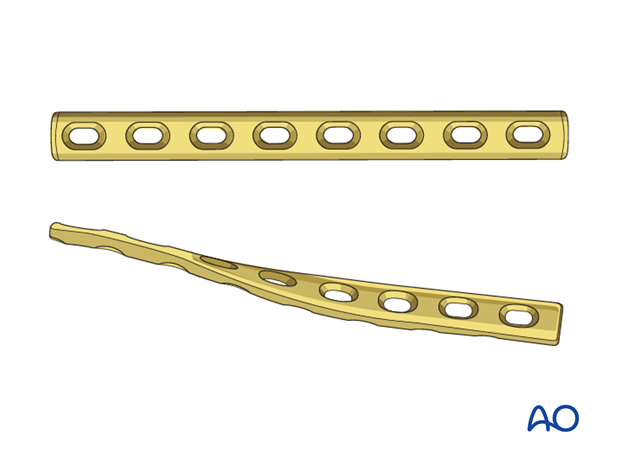
2. Patient preparation and approach
Patient preparation
This procedure is normally performed with the patient either in a beach chair or a supine position.
Approach
For this procedure an anterior approach is normally used.
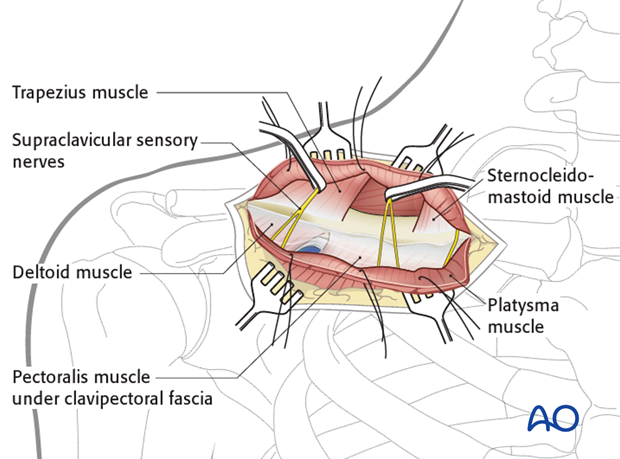
3. Reduction
Using the fracture interdigitations as a gauge for the reduction, obtain control over the proximal and distal fragments using reduction clamps. Gentle traction and a derotation force, typically to the lateral fragment will assist to anatomically reduce the fracture.
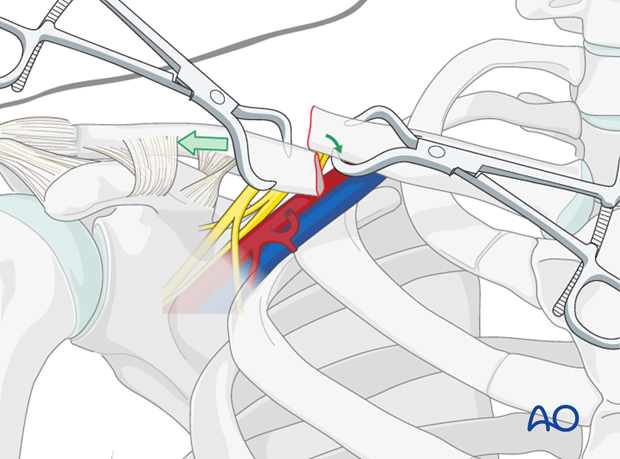
4. Fixation
The plate is applied to one of the main fragments with a single bicortical position screw. A reduction clamp is placed on the opposite fragment.
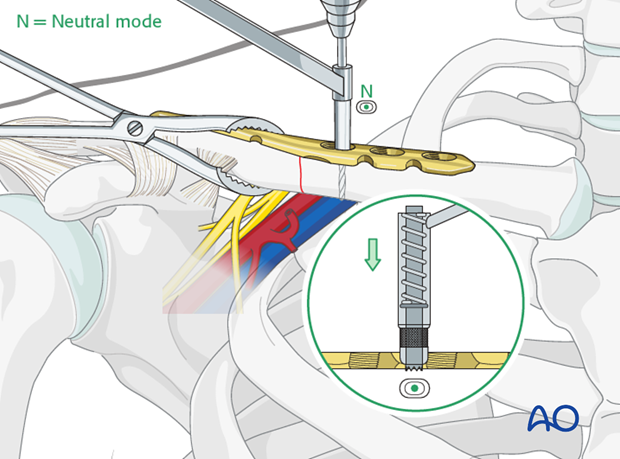
A second screw is inserted eccentrically in the opposite fragment.
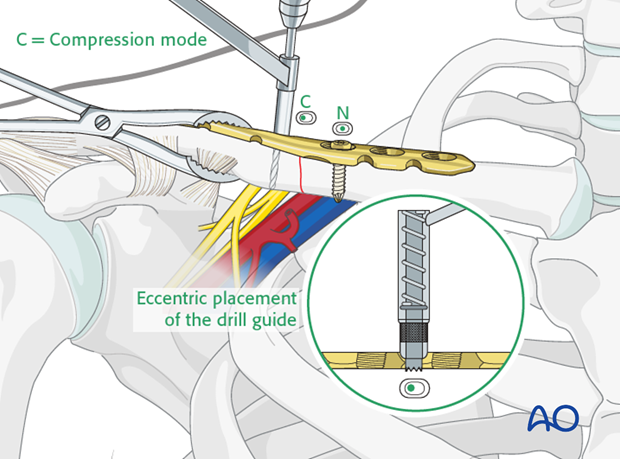
To increase axial compression, a second screw can be placed eccentrically.
When the second screw is tightened, the first screw needs to be loosened to allow further compression.

All other screws are inserted centrically and do not serve to increase compression.
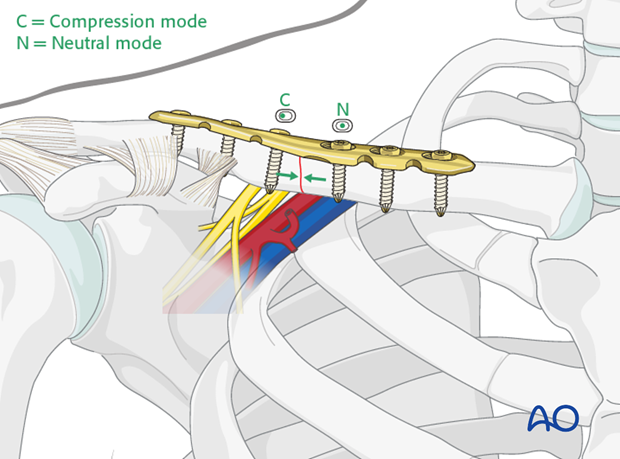
5. Aftercare
The aftercare can be divided into 4 phases:
- Inflammatory phase (week 1–3)
- Early repair phase (week 4–6)
- Late repair and early tissue remodeling phase (week 7–12)
- Remodeling and reintegration phase (week 13 onwards)
Full details on each phase can be found here.













